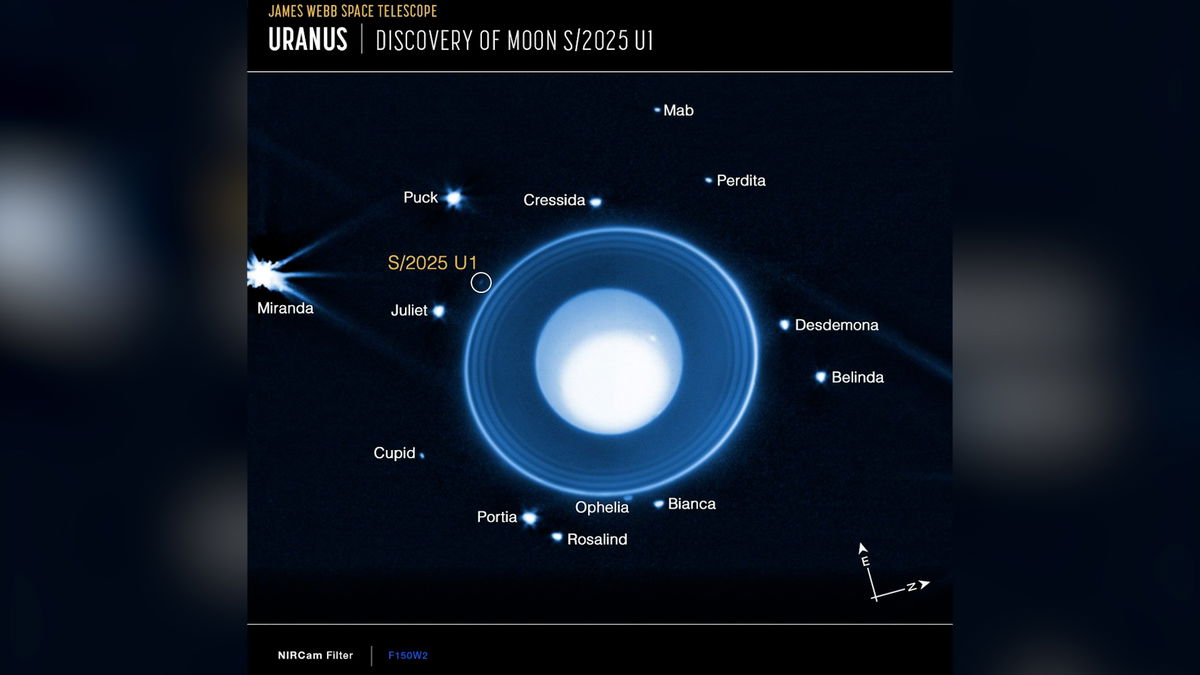U of I Professor helps discover new moon orbiting Uranus

News Release
The following is a news release from the University of Idaho:
MOSCOW, Idaho (KIFI) — A team led by the Southwest Research Institute and including University of Idaho’s Matthew Hedman, a professor of physics, discovered a new moon orbiting Uranus. The team used imagery captured from NASA’s James Webb Space Telescope (JWST) to visualize the planet’s 29th confirmed satellite, among the smallest known moons of Uranus.
Using JWST’s Near-Infrared Camera, the scientists captured 10 40-minute, long-exposure images on Feb. 2, 2025, and spent the spring and summer processing and analyzing the images. The newly identified moon joins a fleet of smaller moons on tightly looping paths around the planet, while five larger moons circle farther from the ice giant.
“This planet system pushes us to study its moons,” said Hedman, a co-investigator on the project. “This is the most densely packed satellite system we’re aware of, but there’s a few places where there aren’t many moons. We wanted to know, is that just because we haven’t found them yet? Or is that because the chaotic interactions among moons have led to one not being there?”
Hedman said computer simulations of Uranus and its satellites show that the smaller moons orbit so close together that their gravitational pulls tug on each other, likely eliciting occasional collisions.
Hedman’s primary contribution to the team was helping process the imagery from JWST.
“One of the things that convinced us that we had a new moon was that we saw it in all 10 pictures, and it was roughly the same brightness in all 10 pictures,” Hedman said.
In addition, the moon was moving around Uranus at the expected speed for a planet with Uranus’s gravity. Hedman and his colleagues estimate the moon to be only 6 miles in diameter.
Hedman and his graduate students will continue to analyze the images, looking to understand how the moons interact and for other previously unseen satellites.
“Understanding how this moon interacts with its neighbors and whether it has a role in sculpting the planet’s rings will be two big things that we’ll want to study,” Hedman said.
The new moon is unofficially named S/2025 U1 until it is formally named by the International Astronomical Union — all of Uranus’s moons bear names from works by Shakespeare and Alexander Pope.